The Laniakea Supercluster, also known as the “Laniakea Galaxy Supercluster” or “SCI Supercluster”, is a supercluster that includes the Milky Way and approximately 100,000 other galaxies.
Many people may have seen this image online that resembles a “leaf vein,” making it hard to imagine that the Milky Way contains countless such veins. As the largest supercluster associated with the Milky Way, the Laniakea Supercluster has a diameter of 520 million light-years and contains about 100,000 galaxies.
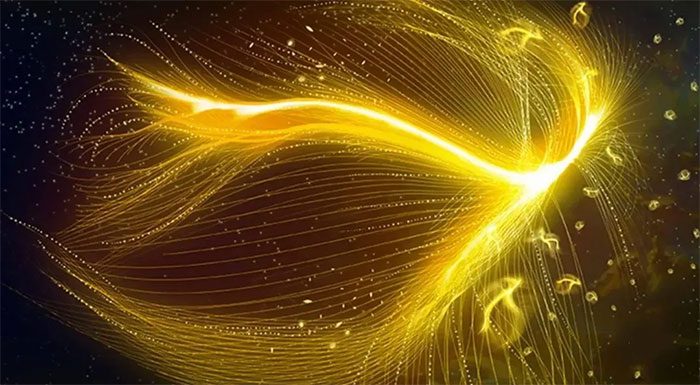
Conceptual image of the Laniakea Supercluster in filamentary form.
So, what is the terrifying structure of such a colossal supercluster? How terrifying is it? Let’s explore!
For humanity, our understanding of the universe is gradually evolving. Initially, we believed that the Earth was the center of the universe, and later, we accepted that the Sun was at its center after reinforcing the geocentric model.
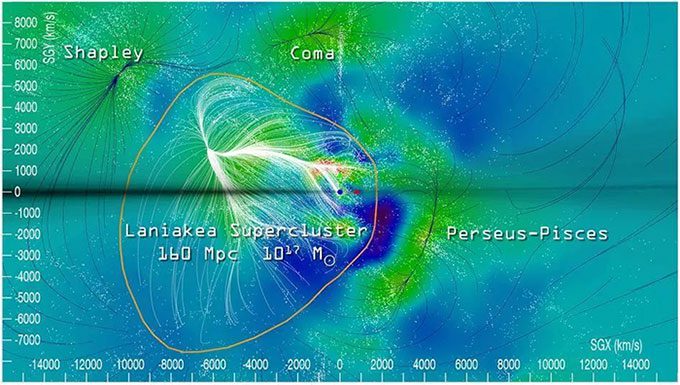
Diagram of the Laniakea Supercluster.
However, with advancements in observational methods, the universe has indeed revealed itself to us with its vastness, which has always been a dream for us. It’s like a frog at the bottom of a well looking up at the blue sky; humanity has only seen the tip of the iceberg of the universe.
First, let’s categorize the relationships between different levels from a macro perspective. At the upper level of the Solar System is the Milky Way, while the Milky Way and the Andromeda Galaxy are part of the Local Group of galaxies. The diameter of the Local Group is about 10 million light-years or more.
Above the Local Group is the Virgo Cluster, which is maintained by gravitational forces. This cluster contains more than 1,300 galaxies. With such a large group, the diameter of the Virgo Cluster exceeds 65 million light-years.
If you push it further, you will see many superclusters that include galaxy clusters, such as the Virgo Supercluster, which has a radius of 100 million light-years and includes about 100 galaxy clusters.
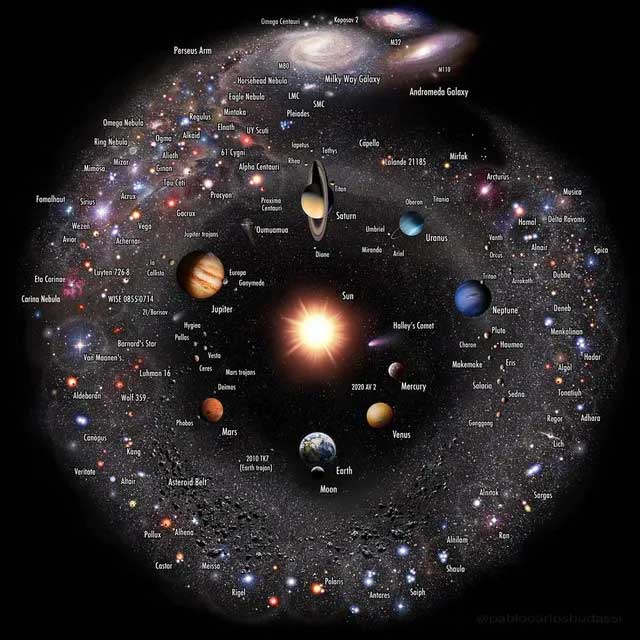
Image of the Milky Way galaxy. (Photo: Space)
At this point, everyone might feel that it’s quite similar, with structures like the Virgo Supercluster being the largest in the universe. However, in reality, “there are taller mountains beyond the mountains”; the Virgo Supercluster, which seems massive to humans, is merely a small “branch” of the Laniakea Supercluster.
According to scientists’ calculations, there are at least 100,000 galaxies in the Laniakea Supercluster, with a diameter reaching 520 million light-years.
Of course, beyond its astonishing scale, the mass of the Laniakea Supercluster is equally daunting, easily reaching 100,000 times that of the Milky Way. And our Solar System, which is not easily noticeable, seems like a “microbial colony” when placed against it, showcasing its immense “greatness” in some aspects.
Thus, because the Laniakea Supercluster is so vast, it resembles a colossal beast lying dormant in the universe.
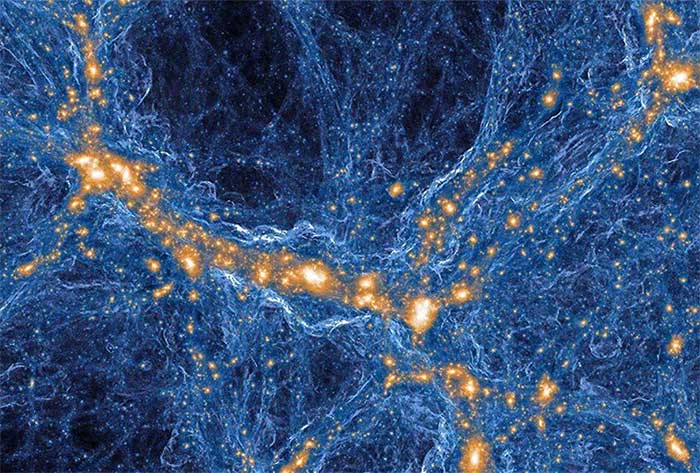
Visualization of the Laniakea Supercluster.
It can be said that the shape of the Laniakea Supercluster is quite distinct in the universe. After all, there are many galaxies like the Virgo Cluster, the Centaurus Cluster, and the Hydra Cluster within this giant’s body. Scientists believe that our current understanding of the Laniakea Supercluster’s extent may still be inaccurate, as some parts of its sky are obscured by the Milky Way’s hidden belt.
However, great size does not mean it can be easily detected, as human observational equipment is still quite limited and cannot directly observe such large-scale structures by simply “seeing.”
Therefore, it wasn’t until 2014, after recording the positions of over 8,000 galaxies in the vicinity of the Milky Way, that scientists from the University of Hawaii established a “model” by proposing relative motion after cosmic redshift, thus confirming the existence of the Laniakea Supercluster.
The scientists named it based on this discovery, using the term Laniakea, which means “immeasurable heaven” in Hawaiian. The Polynesians used their astronomical knowledge to navigate the oceans, often employing this term.
Today, humanity has also utilized astronomical knowledge to infer the existence of such a colossal structure in the universe. Essentially, this is truly our “further reach” into the cosmic ocean. However, it is important to note that despite the Laniakea Supercluster being very large, it is not the largest structure in the universe.
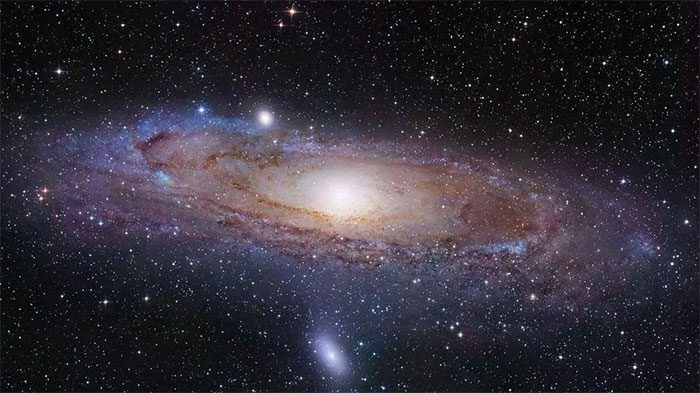
The vast galaxy is our home.
According to scientists’ observations, there are still many large-scale architectural structures in the universe, such as the Wukong-Beimian Great Wall, discovered in 2013, which extends over 10 billion light-years. From this perspective, the Laniakea Supercluster with a diameter of 520 million light-years is indeed not a gigantic mass.
Remarkably, in the eyes of scientists, what is truly terrifying about the Laniakea Supercluster is not its size, as there are many larger structures in the universe. What is genuinely frightening is the “massive source” at its center.
Everyone knows that the magnitude of gravitational force in the universe symbolizes strength, and there is a “huge gravitational pull” at the core of the Laniakea Supercluster. This force is attracting nearby galaxies toward it, and naturally, the Milky Way in the Local Group cannot escape.
So don’t think that the Solar System orbits the Milky Way from a fixed position; in reality, due to the influence of this enormous gravitational force, the Milky Way is moving toward or scattering because the speed of the Milky Way can reach about 600 km/s.

Conceptual image of giant gravitational forces consuming galaxies.
With such a massive gravitational force, this “huge pull” is even scarier than a “black hole” in the eyes of some scientists. Because its current strength has truly surpassed that of a black hole, and it can draw many gigantic galaxies close to itself.
In this case, many cannot help but fear the unseen massive gravitational pull, believing that under its influence, our galaxy will be significantly affected. So, is this giant gravitational pull truly a threat to humanity?
From the current situation, gathering this matter toward a center is normal. Scientists believe this is something the universe has produced since its inception, with the function of continuously collecting and accumulating, transitioning matter in the universe from a “diffused” state to a “clustered” state. As for what happens after aggregation, there’s no way to know.
Additionally, it is worth noting that although we are currently moving closer to the massive gravitational point, theoretically, we will never reach the position of this gravitational point. This is because there’s too much dark matter in the universe that will push us away, causing us to drift away from it.
It can be seen that this massive attractor should not have a preference for devouring stars like a black hole; it merely indicates the “home direction” for various galaxies at the center of the Laniakea Supercluster.
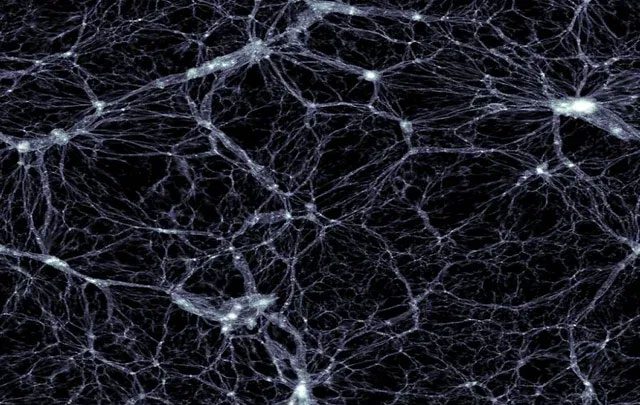
A cross-section simulation showing matter existing in a filamentous network in the universe. The galaxies lie within bright and dense spots.
In summary, we have unraveled the mystery between the Laniakea Supercluster and the gravitational point. The above discussion has been conducted on a large scale, and then we will narrow our vision and compare this gigantic structure in the universe with something on Earth to see if we can find any similarities.
We used leaf veins as a model when describing the shape of the Laniakea Supercluster above. Upon closer examination, we will find that it bears similarities to many things at the microscopic level. For example, capillaries in our body or nerves in the brain.
You can also easily find it in nature, such as branches on trees, intricate river networks, and the fringes of decorations woven by humans—all bear high resemblance to this colossal structure in the universe. If two similar objects can be classified as coincidence, then many similar things are hard to generalize as “coincidence.”
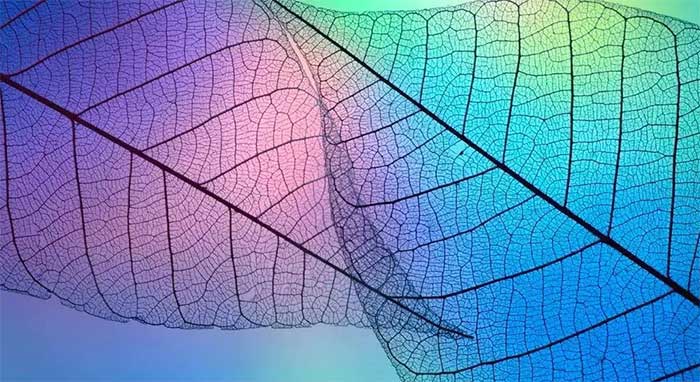
Leaf veins resembling a cosmic network.
For this reason, some scientists hypothesize that since the large-scale and microscopic levels of the universe may show this similarity, it suggests that they are all being “modeled” or “operated” according to a set of processes. In this case, the universe itself could be a brain, and a structure like the Laniakea Supercluster might just be a neuron. Of course, if this is true, the universe represents an existence of “consciousness,” which could be more difficult to accept than the theory of relativity.




















































